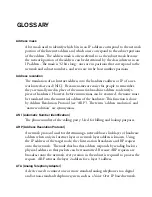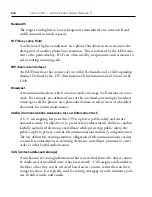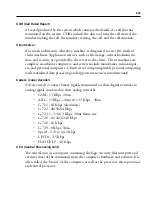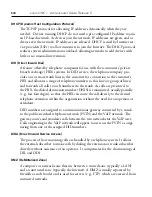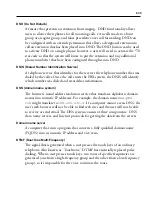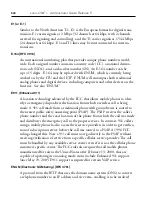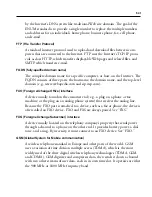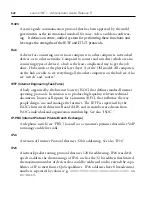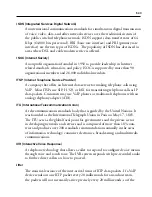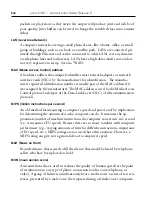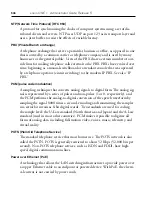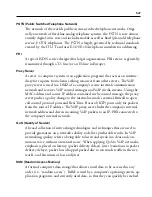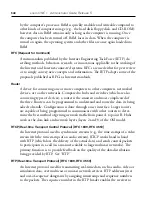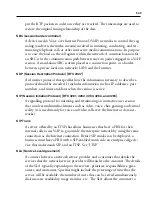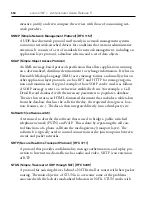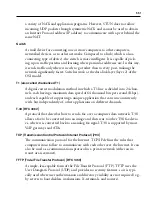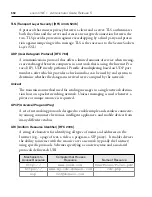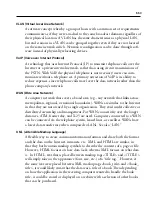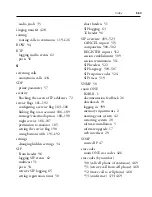
549
put the RTP packets in order once they are received. The timestamps are used to
restore the original timing relationship of the data.
SBC (session border controller)
A device used in Voice over Internet Protocol (VoIP) networks to control the sig-
naling (and even the media streams) involved in initiating, conducting, and ter-
minating telephone calls or other interactive media communications. Its purpose
is to ease the load on the call agents within the network. A common location for
an SBC is in the communication path between any two parties engaged in a VoIP
session. A stand-alone SBC is often placed at a connection point, or a border,
between a private local area network (LAN) and the Internet.
SDP (Session Description Protocol) [RFC 2327]
An Internet protocol that specifies how the information necessary to describe a
protocol should be encoded. It includes information such as IP addresses, port
numbers, and times and dates when the session is active.
SIP (Session Initiation Protocol) [RFC 3261, 3262, 3263, 3264, and 3265]
A signalling protocol for initiating and terminating an interactive user session
that involves multimedia elements such as video, voice, chat, gaming, and virtual
reality (it is used mainly for voice and video calls over the Internet or data net-
works).
SIP Trunk
A service offered by an ITSP that allows businesses that have a PBX for their
internal calls to use VoIP to go outside the enterprise network by using the same
connection as the Internet connection. Before SIP trunks can be deployed, a
business must have a PBX with a SIP-enabled trunk side, an enterprise edge de-
vice that understands SIP, and an ITSP. See “ITSP.”
SLA (Service Level Agreement)
A contract between a network service provider and a customer that details the
services that the network service provider will furnish to the customer. The details
of the SLA typically expand upon the services, priorities, responsibilities, guar-
antees, and warranties. Specifics might include the percentage of time that the
service will be available, the number of users that can be served simultaneously,
dial-in access availability, usage statistics, etc. The SLA allows the customer to
Содержание ONE IP
Страница 4: ......
Страница 19: ...Part I Getting Started...
Страница 20: ...Part I Getting Started...
Страница 47: ...Part II Administering the System...
Страница 48: ...Part II Administering the System...
Страница 195: ...Deploying the snom ONE IP Telephone System 526...
Страница 201: ...Deploying the snom ONE IP Telephone System 532 Figure C 1 Trunk Settings for Configuration with Exchange 2007 2010 UM...
Страница 223: ......

